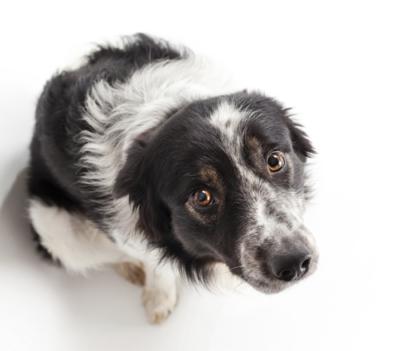
Have you ever wondered what is going on inside your dog’s head? To be honest, we can’t really know, however it’s an interesting subject for the dog lover to ponder.
Dogs are so much a part of our family that it can be hard to accept that they are not human and don’t think the same way we do. An understanding of how a dog’s brain works and the way they communicate helps us to recognise what they are feeling and how we can best provide for their needs.
Not only can we learn more about their motivations and body language, we can also learn to communicate in a way that makes sense to them.
Information is the common currency of dogs and their most valued resource.
In any new situation, you dog may seek to find out: Who’s in charge? What are the rules? Where do I fit in?
With new objects it seems to be: Can I eat it? Should I save it? Is it fun to play with? Will I mark it?
Always there will be the questions: Am I safe or unsafe? Unsure? Where are the exits? Where are the threats? What worked before?
Information represents control over their environment as they search for comfort and security in their world.
You will see your dog provoking their environment to get information about what’s going on. They want to see how others around them, people or other pets, will respond. This might take the form of barking, movement, touching, nudging or even aggression or humping.

How can we best communicate with our dog?
To communicate with dogs fairly and kindly, we need to focus on providing them with information that is relevant, unambiguous, consistent, reliable and accurate. It needs to make sense to them. Visual signals are more powerful than verbal ones.
Consistency is key, as is staying positive and friendly towards your companion. We choose to have pets so we can smile with love for them. Never feel you need follow outdated confrontational training methods. These only cause fear which impedes learning, dissolves trust and damages that precious bond with our mate.
Dogs communicate with body language which can often be misinterpreted. If they do not follow your cue, don’t be hasty to label them as stubborn. With hearing four times more sensitive than ours, it is likely they hear us loud and clear. They may be avoiding a situation they have learned to fear or just don’t understand.
Perhaps the most misunderstood suite of canine behaviours are the ‘fiddle’ body postures used to convey appeasement or conflicted emotions. These are normal behaviours like stretching, yawning, looking away, blinking, shaking off, lip licking, showing the whites of eyes. They are normal behaviours used out of context to diffuse a situation in the doggy world. Our pets will often use these signals in response to a reprimand and owners commonly misunderstand this as guilt.
We owe it to our dogs to try our best to understand the way they think. We need to credit them with their capabilities and avoid attributing them with understanding they don’t have. They are not people and cannot be expected to act like humans. There is no perfect dog (or perfect person for that matter). Expect them to have the reasoning ability and emotional development of a two year old child.
They are opportunists, impulsive and live mainly in the moment. They are not bound by morals or aware of right and wrong. In any particular situation, your dog’s behaviour is shaped by their memory of consequences of past actions in similar settings. They will choose to do what has worked for them before. They can experience fear, anxiety, excitement, frustration, rage, disappointment and social bonding. They are not capable of regret, guilt or spite. Nor can they be stubborn or vindictive.
Over the 40,000 years that we have co-evolved with dogs, they have learned to read our body language better than any other animal. Dogs are one of the very few animals that have the ability to follow the line of direction from our pointed finger to an object! They know when we can be trusted and when we are unpredictable and angry.
We can also learn a little of their own language to communicate with them. Turning our body side on, averting our gaze or crouching down reduces threat in their eyes. A play bow is recognised as an invitation to play. However, don’t be tempted to yawn when they yawn or growl back as they are likely to feel intimidated.
In part two of “How Dog’s Think”, we will look at understanding how the normal brain works, and how dogs learn so that we can teach them to be good citizens and reduce undesirable behaviours.
We are so privileged to have dogs share our lives. They are deserving of the greatest respect.
